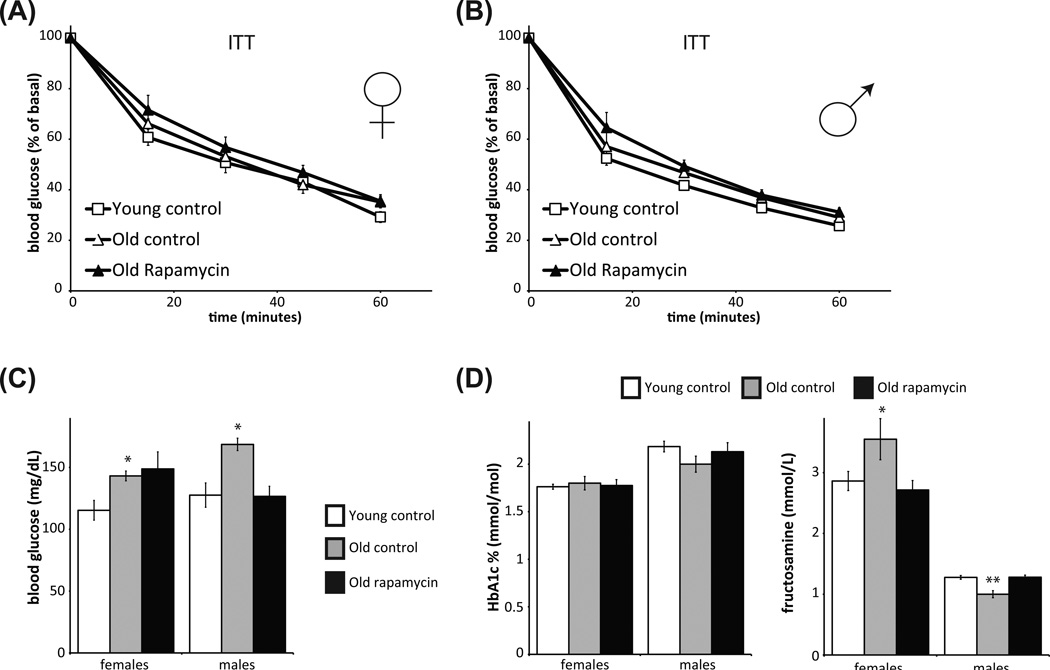Fig. 3.
Rapamycin treatment does not negatively impact insulin tolerance or HbA1c levels in older HET3 mice treated for 5–7 months. Insulin tolerance test was performed on (A) female and (B) male HET3 mice. Average ages for female (F) and male (M) mice are given in months: young control (F, 13.0; M, 11.6), old control (F, 27.5; M, 25.7); old mice on rapamycin from 20 months of age (F, 27.4; M, 25.4). (C) Old male and female controls have fasting hyperglycemia relative to young controls and (female only) relative to rapamycin-treated old mice (*P < 0.006, two-tailed t-test). (D) HbA1c and fructosamine were measured in the same mice. There was no effect of age or rapamycin on HbA1c levels; however, fructosamine was lower in old female mice treated with rapamycin compared to controls (**P < 0.01), and trended higher in old males receiving rapamycin (*P < 0.06, two-tailed t-tests).

